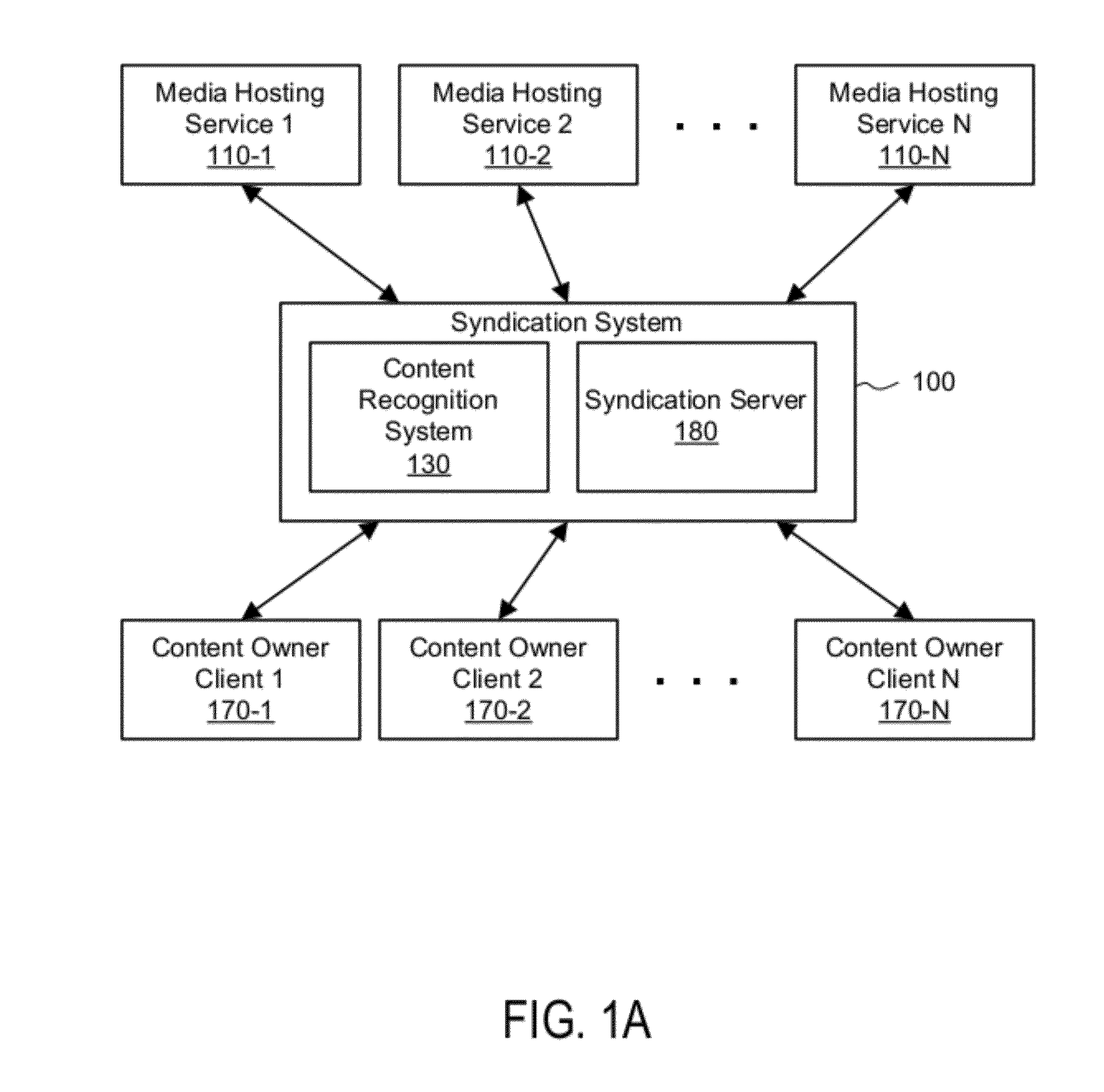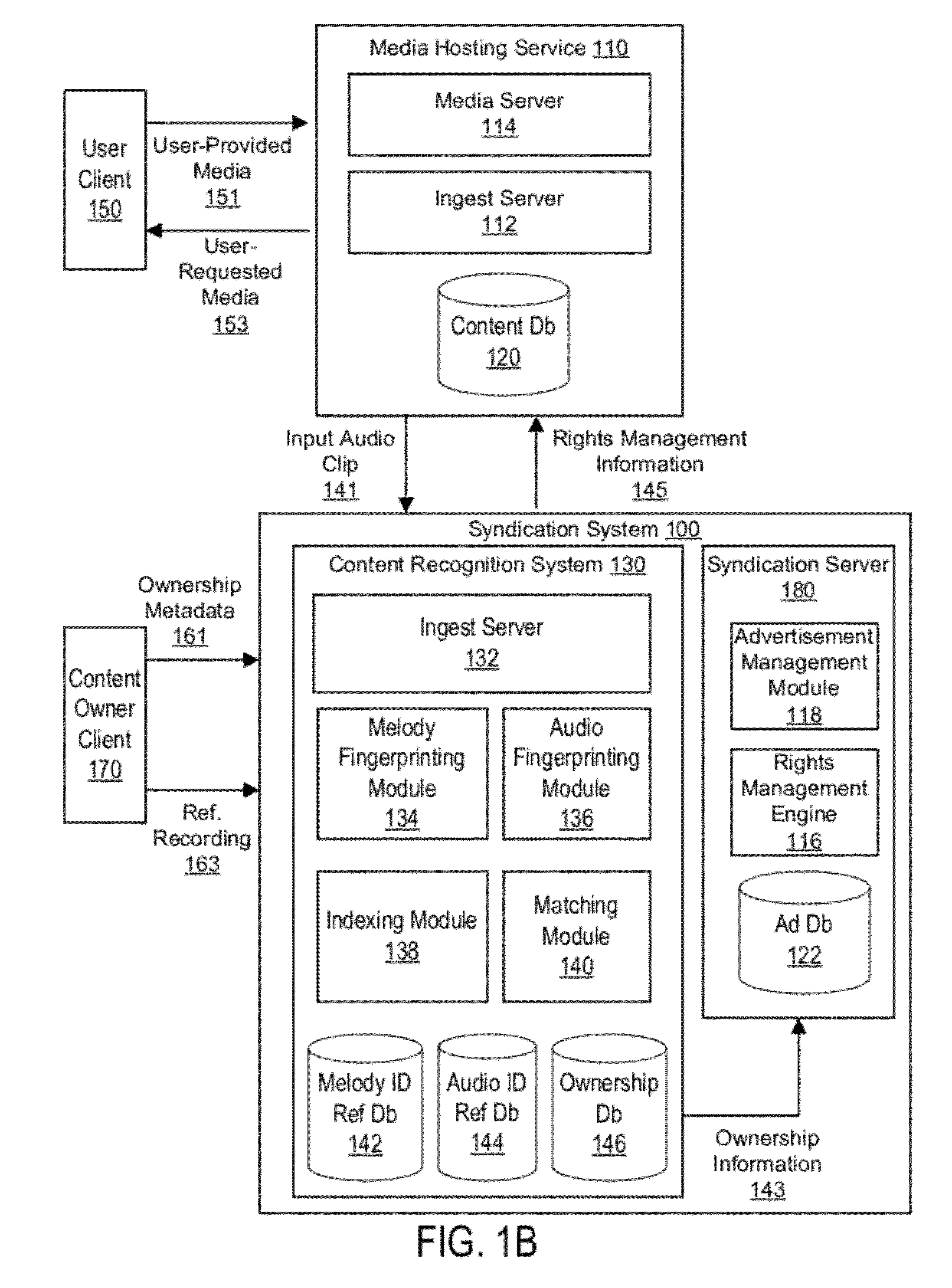Syndication including melody recognition and opt out
a melody recognition and melody technology, applied in the field of media sharing, can solve the problems of increasing difficulty in managing ownership rights pertaining to hosted media content, affecting the quality of hosted media content, and unable to meet the robustness and scalability of modern media hosting services, so as to facilitate rights management services
- Summary
- Abstract
- Description
- Claims
- Application Information
AI Technical Summary
Benefits of technology
Problems solved by technology
Method used
Image
Examples
Embodiment Construction
Overview
[0025]A syndication system facilitates rights management between mutually participating media hosting services and content owners. Individual media hosting services and content owners can choose whether or not to participate in the syndication system. For those entities electing to participate in the syndication system and with each other, the syndication system identifies content hosted by the participating media hosting services using a content recognition system. Once media content is identified, the syndication system determines rights management policies associated with the identified content. Then the syndication facilitates rights management services between the media hosting services and the content owners of the identified content in accordance with the identified policy. Under various rights management policies, the rights management services may include, for example, instructing the media hosting service to block the content, selecting advertisements for placement...
PUM
 Login to View More
Login to View More Abstract
Description
Claims
Application Information
 Login to View More
Login to View More - R&D
- Intellectual Property
- Life Sciences
- Materials
- Tech Scout
- Unparalleled Data Quality
- Higher Quality Content
- 60% Fewer Hallucinations
Browse by: Latest US Patents, China's latest patents, Technical Efficacy Thesaurus, Application Domain, Technology Topic, Popular Technical Reports.
© 2025 PatSnap. All rights reserved.Legal|Privacy policy|Modern Slavery Act Transparency Statement|Sitemap|About US| Contact US: help@patsnap.com



